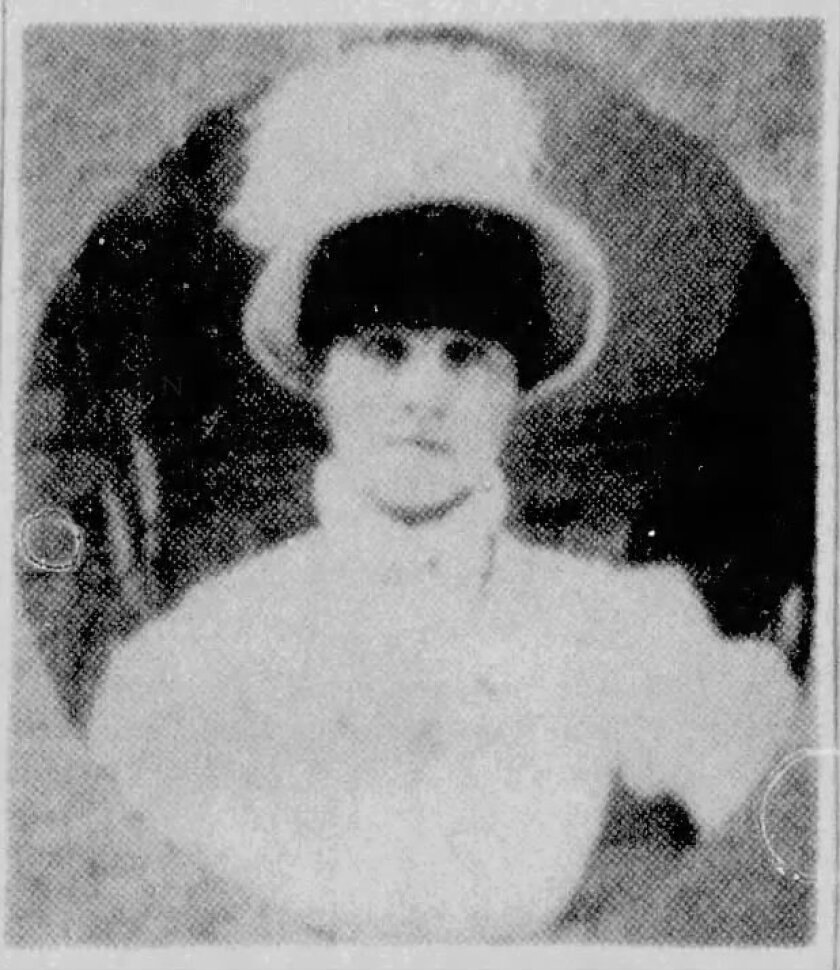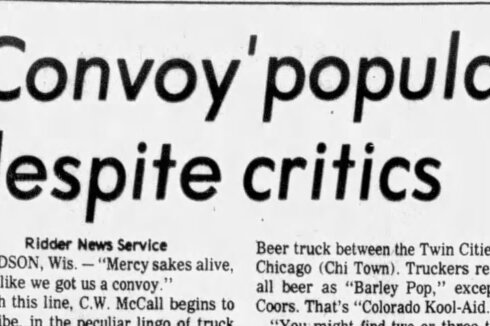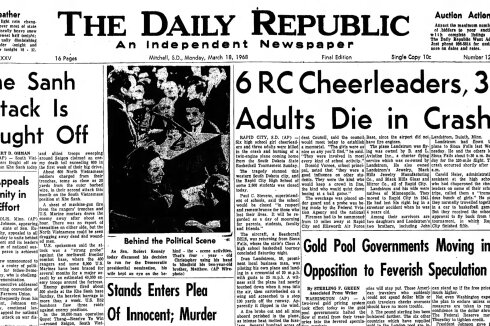WAHPETON, N.D. — Thomas Condon was milking a cow when he heard gunshots coming from the nearby house. One, two, three.
Condon headed for the house, which belonged to Sheriff John H. Miller. Condon swung open the kitchen door and saw the body of Mollie Korbel. The 19-year-old was the sheriff's hired help. Now her body was huddled near the sink, bloody and lifeless. Condon backed through the door, and turned to flee and report the shooting.
ADVERTISEMENT
He turned the corner of the house and was confronted by Deputy Sheriff Lee S. Elmer, holding a revolver. The gun was still hot.
Elmer wasn't the law — not anymore. He was the killer.
The murder of Korbel on July 25, 1888, enflamed Wahpeton and set town residents on a murderous course of their own. Decades after the incident, many residents still didn't want to talk about what happened.
An embattled prisoner
The news spread quickly. Deputy Sheriff Walter Pelham had arrested and imprisoned Elmer in the county jail for the murder of Korbel, who was said to be a popular, beautiful young woman.
An angry crowd began to gather outside the jail.

Sheriff Miller was out of town to serve papers to someone, and had taken his wife and family, who were fortunate not to be in his house at the time of the killing. When notified of the murder he rushed back to Wahpeton.
The crowd at the jail was getting larger, and angrier. The word was that Elmer had been drinking, that he had proposed to Korbel, that he had been rebuffed, then gave her an ultimatum, that she had until 1 p.m. to make up her mind.
ADVERTISEMENT
Elmer had swallowed a few drinks at a Wahpeton bar, it was said, and had commented he was going to "fix" someone. He then shot her while she was washing dishes.
Pelham added more guards to the jail and the crowd largely dispersed overnight. The next morning, Sheriff Miller still had reason to be concerned. Groups of people were gathering at street corners in town, talking again about lynching Elmer.
A.G. (Guy) Divet was a young man at the time, living on his family's place outside Wahpeton, and later recounted the day. A member of a neighboring family rode into the Divet yard with the news: Korbel was killed. Elmer was in jail. And there was to be a lynching.
The talk continued around town, even as Korbel's body was placed in a coffin and moved in the county courthouse to better accommodate the crowds of people who wanted to wish her a final farewell.

Decades later, Korbel's sister, Theresa Korbel Mikkelson, recounted seeing her sister's body in her coffin.
"She had on a nice white organdy dress with puffed sleeves," said Theresa, who was 10 at the time of the murder. "They had put a bouquet of flowers by her neck and chin to hide the bullet holes. She looked just like she was sleeping."
Sheriff Miller swore in additional deputies to guard the jail and personally joined the guard line for the night.
ADVERTISEMENT
The lynching and the silence
Miller didn't have to wait very long.
At 1 a.m. the next morning, July 27, a crowd of several hundred people descended on the jail. About 40-50 were wearing masks.
The masked men broke through the guard line, sending Miller spinning away, and slammed a heavy sledgehammer against the jail door, cracking it open 15 minutes later.
As they bashed down the doors that imprisoned him, Elmer tried to hang himself in his cell, without success.
The masked mob tied a rope around his neck and took him to the bridge crossing the Bois de Sioux River.

When given the chance, he confessed to the murder, saying he had shot Korbel but was not sorry, that he "must have been crazy."
"Do you want to pray?" He was asked. "No," he replied, and added he had nothing more to say. He was then drawn up and hanged from the bridge.
ADVERTISEMENT
His body was placed in a coffin and, just like with Korbel's body, many people also came to look at his remains.
Korbel was given a fine funeral in St. John's Catholic Church. Sixty teams of horsed pulled the funeral procession. She was buried i n Calvary Cemetery.
In newspaper reporting, there was no mention where Elmer was buried.
Decades later, a reporter tried to interview Whapeton residents about the lynching. It wasn't easy to do.
"Among some people ... there is a reticence," wrote reporter-historian Roy P. Johnson in the March 1, 1950, edition of The Forum. "It is not pleasant to talk about a lynching in which you participated, or in which a father or uncle had a part ... as time passed, people became silent."
Note: Reporting for this article is largely a distillation of a thorough article by reporter-historian Roy P. Johnson published in The Fargo Forum on Feb 12, 1950. Johnson's article was based on the Feb. 11, 1950, written report of A.G. (Guy) Divet, who grew up near Wahpeton and remembered the lynching, additional on-the-ground reporting, and accounts in the Wahpeton Times and the Wahpeton Gazette.









